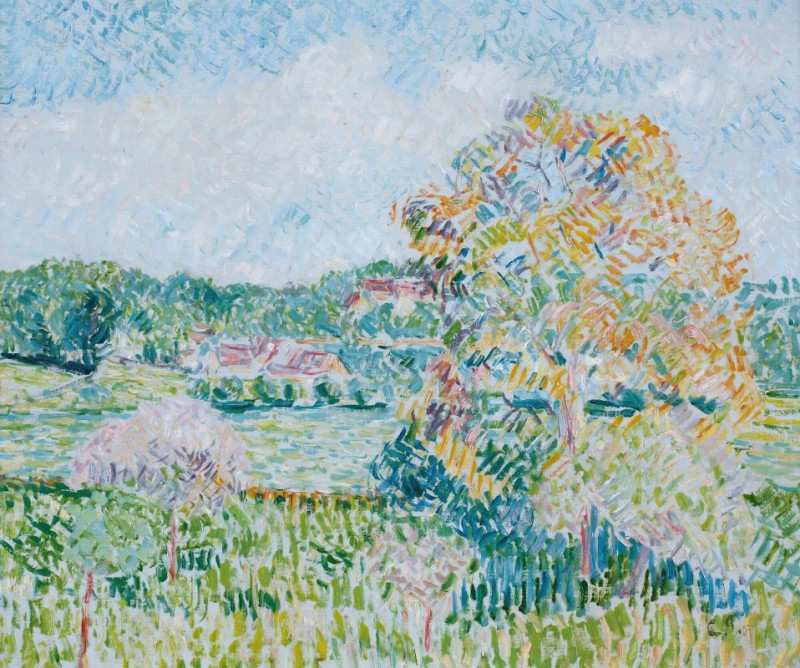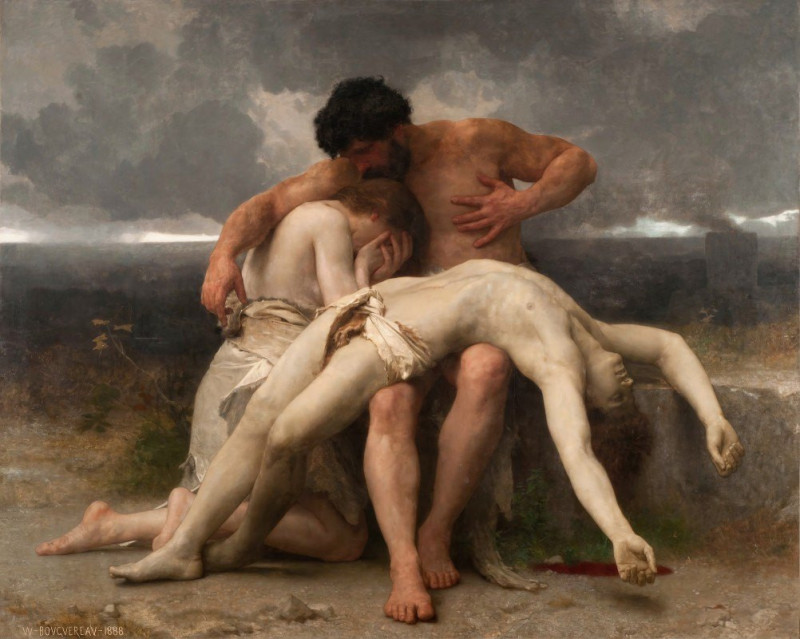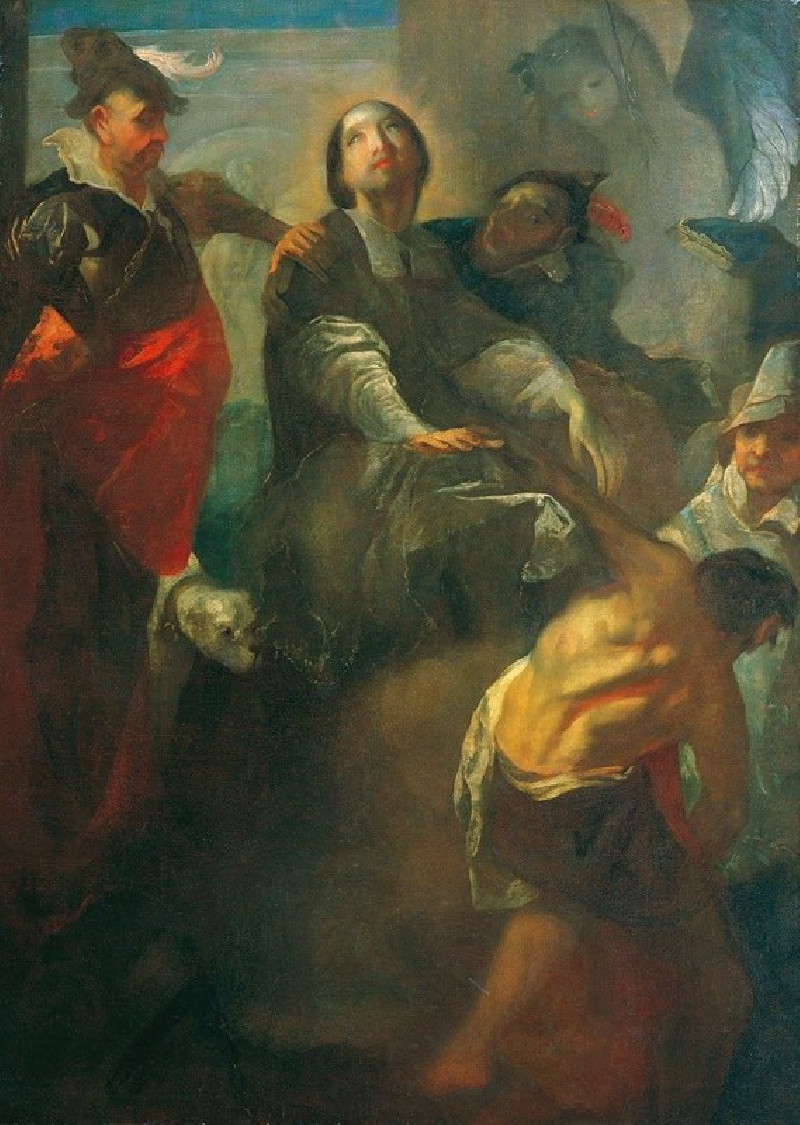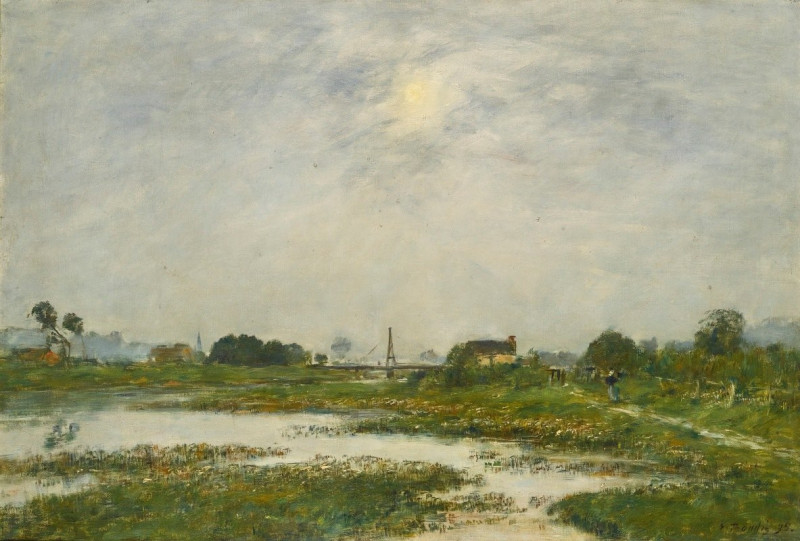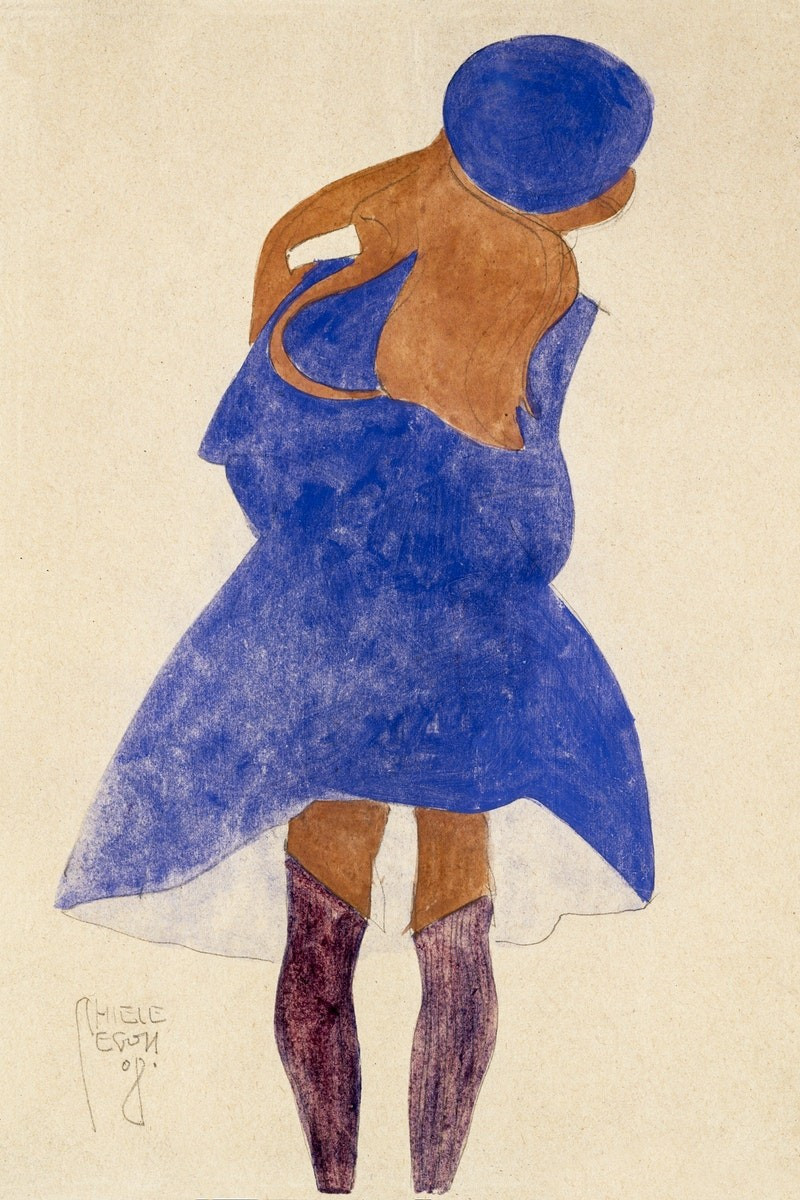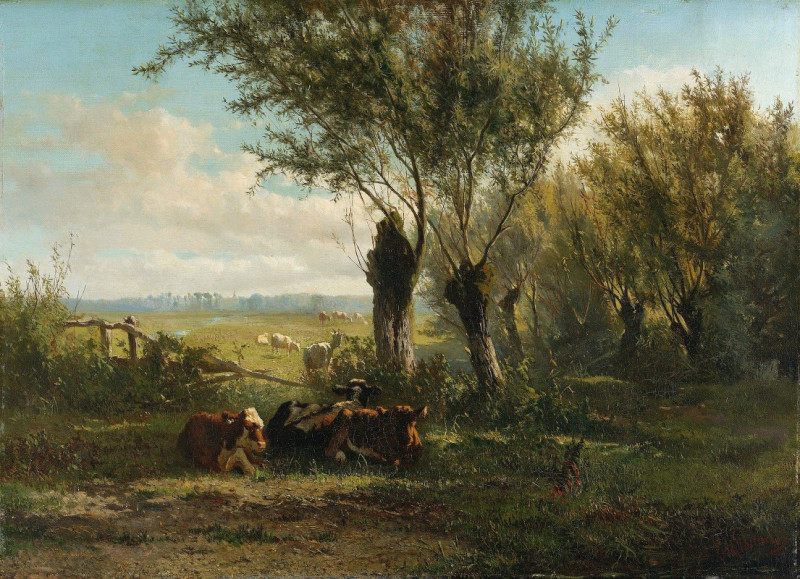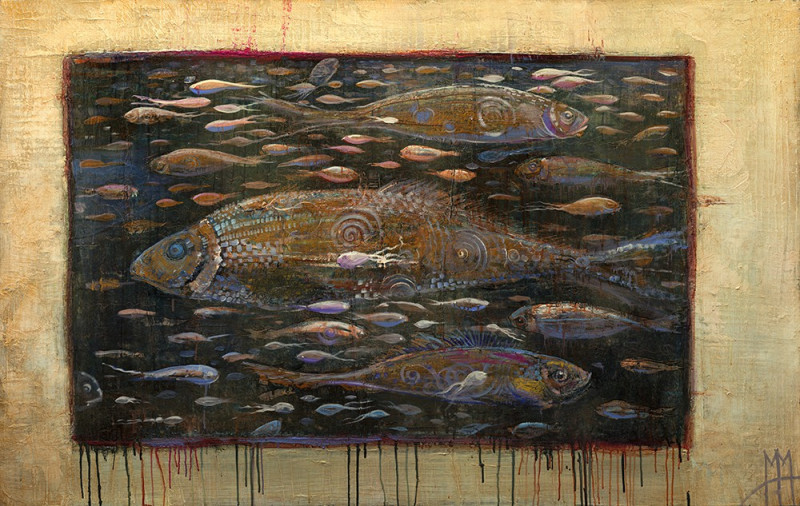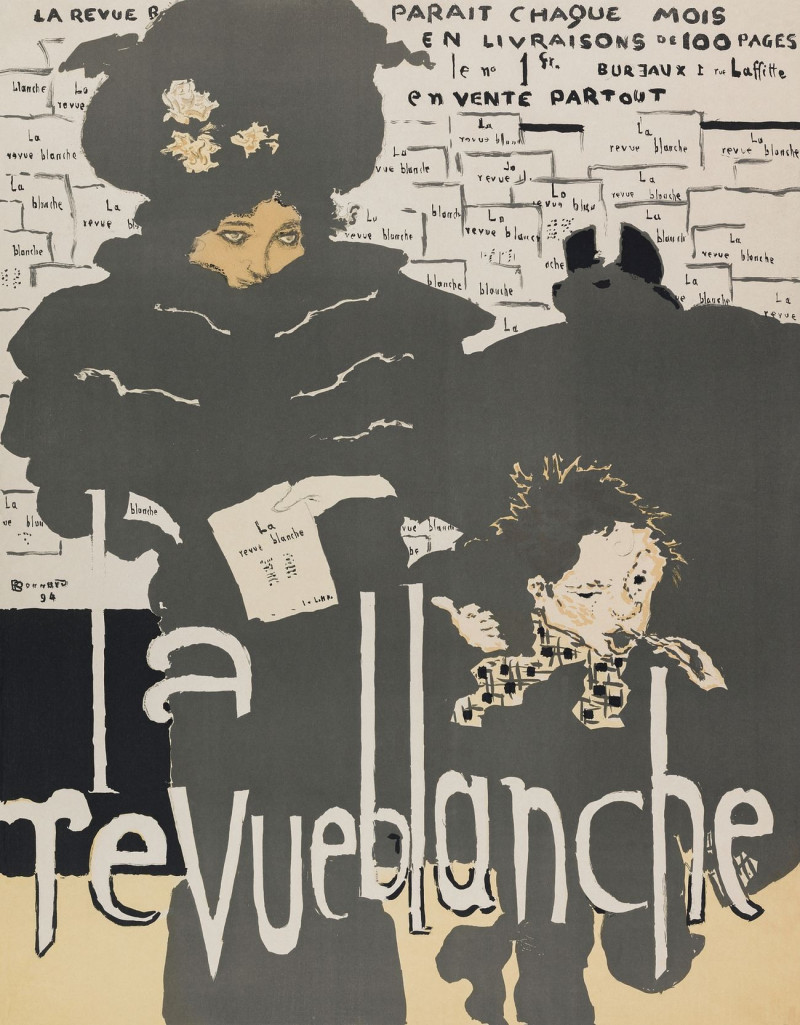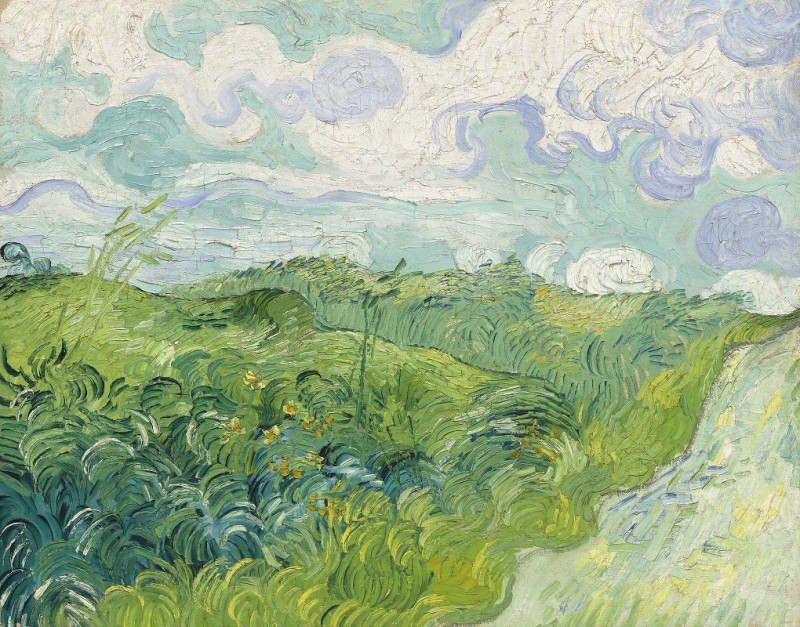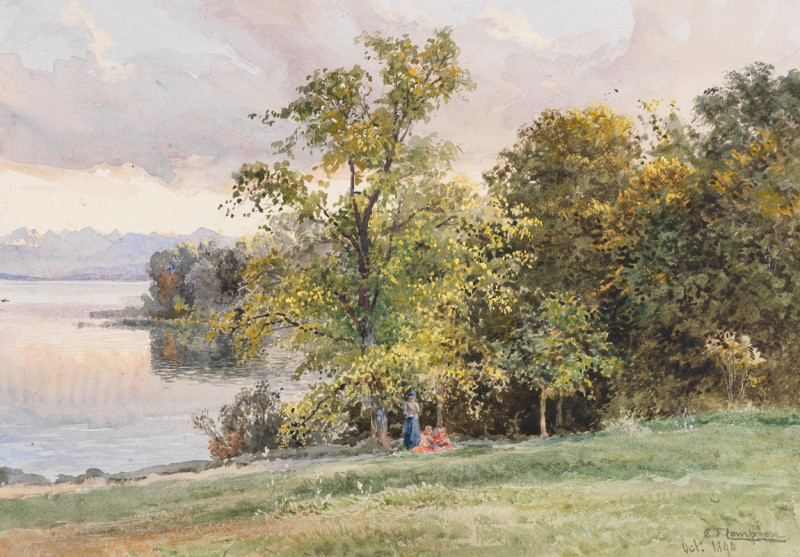Le Grand Noyer À Eragny, Automne (circa 1890)
Technique: Giclée quality print
Recommended by our customers
More about this artwork
"Le Grand Noyer à Eragny, Automne" by Camille Pissarro is a captivating Impressionist painting that beautifully captures the essence of the French countryside in autumn. Created around 1890, this artwork is a splendid example of Pissarro's skill in portraying the transient effects of light and color through a vivid, textured application of paint.At the center of this composition stands a magnificent walnut tree, its foliage a riot of autumnal colors ranging from fiery oranges to soft yellows, mingling with greens. The brushstrokes are loose and dynamic, suggesting the gentle sway of the leaves in the breeze. This central tree dominates the scene, yet it allows glimpses of the lush, verdant fields in the backdrop, dotted with the subtle hints of rural life.In the distance, small structures possibly representing farm buildings, painted in soft reds and whites, hint at human habitation, seamlessly integrating man-made elements with nature. The sky, a light, almost serene blue, is broken up by the textured strokes that give an impression of a soft, moving cloudscape."Le Grand Noyer à Eragny, Automne" not only showcases Pissarro’s masterful impressionistic technique but also his profound appreciation and connection to the landscapes around his home in Eragny.
Delivery
Returns
Blessed are they who see beautiful things in humble places where other people see nothing. — Camille Pissarro
Camille Pissarro (1830-1903) was born on St.Thomas (now the US Virgin Islands) to a Portuguese father and a Dominican mother. He went to Paris to study art at Ecole des Beaux-Arts. He was an early pioneer of pointillism and neo-impressionism and later became a mentor of many famous impressionist painters including Cezanne, Manet, Renoir, and Gauguin. His paintings depicted rural and urban French landscapes and lifestyle. Many of his works politically captured images of peasants and laborers. Today, he is considered the father of impressionism.

